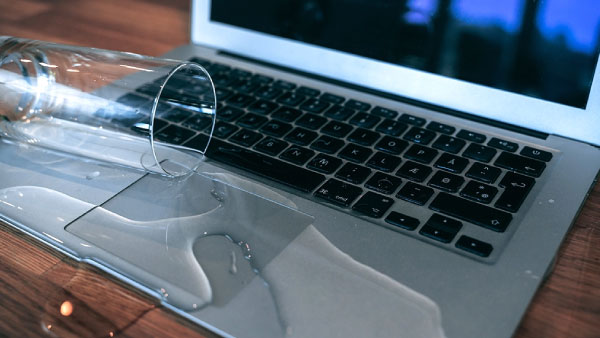What to Do When Your Laptop Gets Liquid Damage
Spilling liquid on your laptop can feel like a disaster, but acting quickly and following the right steps can help save your device and minimize lasting damage. Here’s a practical guide to handle laptop liquid damage effectively.
- Power Down the Laptop Immediately
Your first priority should be safety. Turn off your laptop right away to avoid electrical short circuits and minimize further damage.
- If connected to power, unplug it from the source.
- Remove the battery if it is detachable.
- Disconnect External Devices
Detach all peripherals, including the mouse, keyboard, and external storage devices. This prevents possible damage to these accessories and the laptop’s ports.
- Drain Any Liquid
Flip the laptop upside down to let the liquid flow out. This step helps prevent the liquid from reaching deeper into internal components.
- Wipe Off Excess Liquid
Gently blot the surface with a lint-free cloth or paper towel to absorb as much liquid as possible. Be cautious not to push the liquid further into the device.
- Disassemble if Confident
If you have experience with laptop disassembly, carefully remove the back panel to expose internal parts. This aids in more effective drying. If you are unsure, skip this step and proceed with external drying.
- Allow the Laptop to Dry
- Air Drying: Place the laptop in an inverted “V” shape, with the keyboard and screen facing downward, to encourage liquid drainage.
- Avoid direct heat sources like hairdryers or ovens, as they can damage the internal components.
- Be Patient
Let the laptop dry for 24 to 48 hours. Giving it sufficient time to dry increases the likelihood of fully eliminating moisture.
- Inspect and Test
After drying:
- Check for any visible signs of moisture.
- Reassemble any removed parts and power on the laptop.
If it powers on, test all functions to ensure everything is working as expected. If it doesn’t power on, internal damage may have occurred, requiring professional assistance.
Even if the laptop appears functional, it’s wise to have it inspected by a technician to avoid potential long-term damage caused by corrosion.
- Seek Expert Repairs
If the laptop fails to operate or exhibits malfunctions, consult a professional repair service. A technician can diagnose and address any internal damage effectively.

